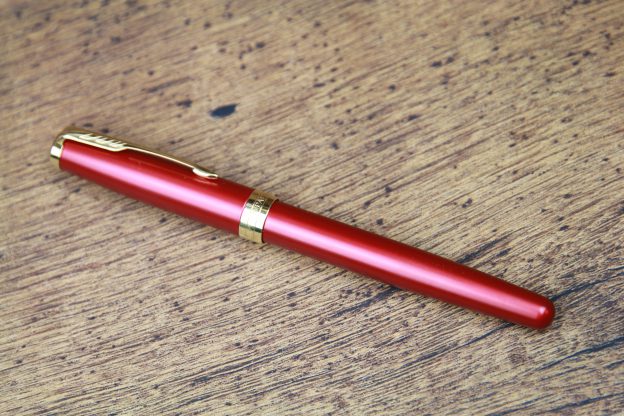Are you new to the world of fountain pens? Amazed by the complexity such simple tools? Many parts make up even the simplest of fountain pens. This guide explains the basic anatomy of a fountain pen.
The Anatomy of a Fountain Pen Beginners Guide
The Cap
Most caps consist of a clip, finial, cap band, and an inner cap. The clip allows the pen to be attached to a pocket, case, or piece of clothing. However, some caps do not come with a clip, and usually come advertised as “clipless”. The finial comes on the top of the cap, and helps hold the clip in place. The cap band helps to hold the inner cap in place. The inner cap stays inside the cap, and allows for the ever-popular “snap-cap”. Also, inner caps help keep your ink fresh and ready to go.
The Barrel
Altogether quintessential but simple, the barrel protects your cartridge, converter, or sometimes Ink Sac. Usually, the barrel is made of plastic, aluminum, or wood, but they can be made out of any workable material.
The Grip Section
This may seem to be just a place to hold your pen, but there is much more to it than just that. The grip section also houses the nib unit, and includes the threading to attach the barrel.
The Nib Unit
Last, but not least, we have the nib unit. Without the nib unit, you do not have a fountain pen. The nib unit consists of three separate parts. First, you have the nib itself. Normally made of stainless steel, or gold, the nib has two tines that are separated at the breather hole. At the tips of these tines, you have the tipping material that makes contact with the page. Secondly, you have the feed. Normally made of plastic, or ebonite, the feed allows ink to travel from the cartridge/converter, down the ink channel, and out onto the page. The feed makes use of the wonderful force known as capillary action. Lastly, we have the housing. The housing comes with threading that screws directly into the grip section. The nib and feed fit snugly into the housing, and all together they form the nib unit.
Conclusion
Make sure that you take a look at out other how to guides and blog posts! If you liked what you read, share this with your friends, so that they can learn, too! As always, we have the Write Tools For the Analog Writer!
Best Fine Pens
Buy Pen Ink & Refills
Memo Books & Notebooks
Pen Brands
Porsche Design Pen Company
Pelikan Pen Company
Waterford Pen




